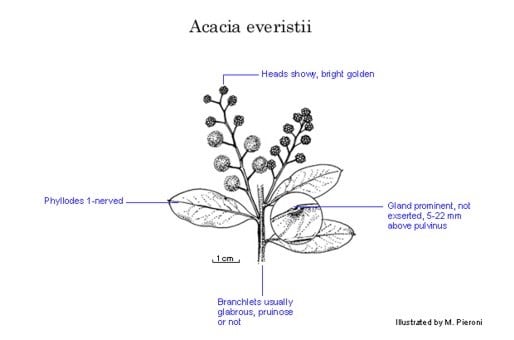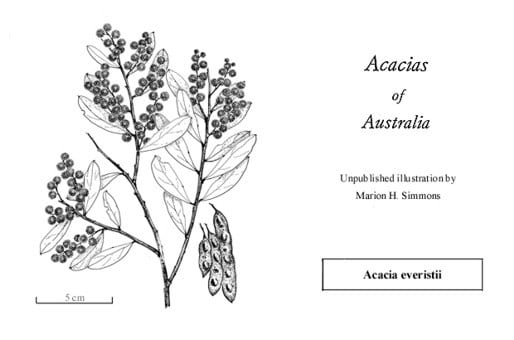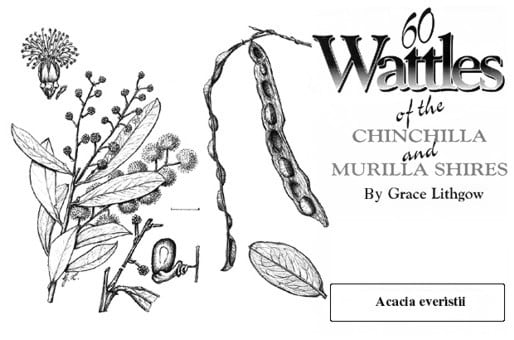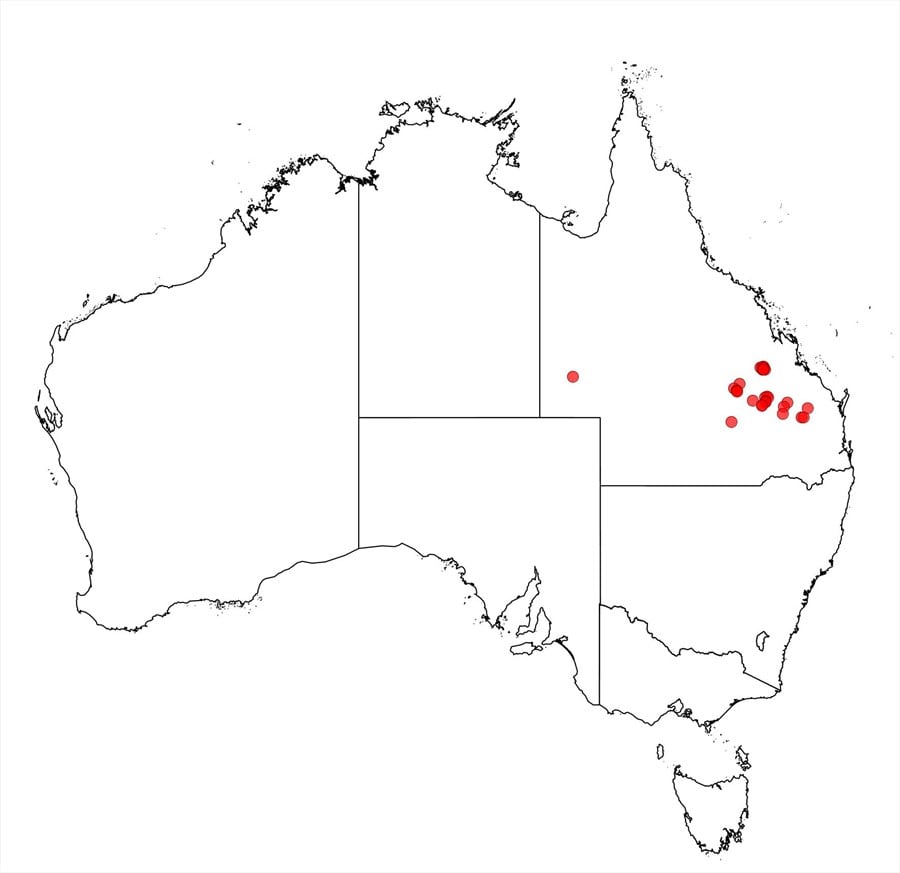Acacia everistii Pedley
WATTLE
Acacias of Australia
Family
Fabaceae
Distribution
An uncommon species occurring from near Brovinia NW to the Expedition Ra. on the Blackdown Tableland, Qld.
Description
Sparingly branched shrub to 3 (–5) m high, closely allied to A. jucunda but differing mainly in the following ways. Branchlets and phyllodes usually glabrous and sometimes not pruinose. Gland prominent but not or scarcely exserted beyond margin, 5–22 mm above pulvinus. Raceme axes and peduncles glabrous.
Habitat
Grows in sand or sandy loam on sandstone, in Eucalyptus forest or open woodland.
Specimens
Qld: 13.9 km N of Auburn Stn on Eidsvold road., M.E.Ballingall 2128 (BRI, PERTH); 14 km by road NE of Monogoorilby towards Mundaberra, R.Coveny 6829 & P.Hind (A n.v., AD n.v., BRI, K n.v., CANB n.v., L n.v., MEL n.v., NSW, PERTH, UC n.v., US n.v.); 33.7 km SE of Bedourie, N.H.Speck 1853 (BRI, CANB n.v., NSW); Expedition Ra., Blackdown Tableland, near top of Rainbow Falls, I.R.Telford 5687 (BRI).
Notes
Also related to A. semirigida.
In the field A. everistii and A. jucunda are rarely confused because A. jucunda is normally a larger, much more branched plant usually found in finer textured soils, fide L.Pedley, loc. cit.
Occasional specimens from the Blackdown Tableland have shorter than normal racemes (0.5-2 cm long), fide L.Pedley, Austrobaileya 1: 279 (1980) (e.g. R.J.Henderson 930 et al., BRI, NSW). Gland position suggests that M.E.Ballingall 2128 is A. everistii, but this specimen is unusual in having sparsely hirtellous branchlets (hair length similar to the type of A. jucunda) and in being more conspicuously pruinose than most other collections of this species.
FOA Reference
Data derived from Flora of Australia Volumes 11A (2001), 11B (2001) and 12 (1998), products of ABRS, ©Commonwealth of Australia
Author
Minor edits by B.R.Maslin
B.R.Maslin
This identification key and fact sheets are available as a mobile application:
URL: https://apps.lucidcentral.org/wattle/
© Copyright 2018. All rights reserved.









